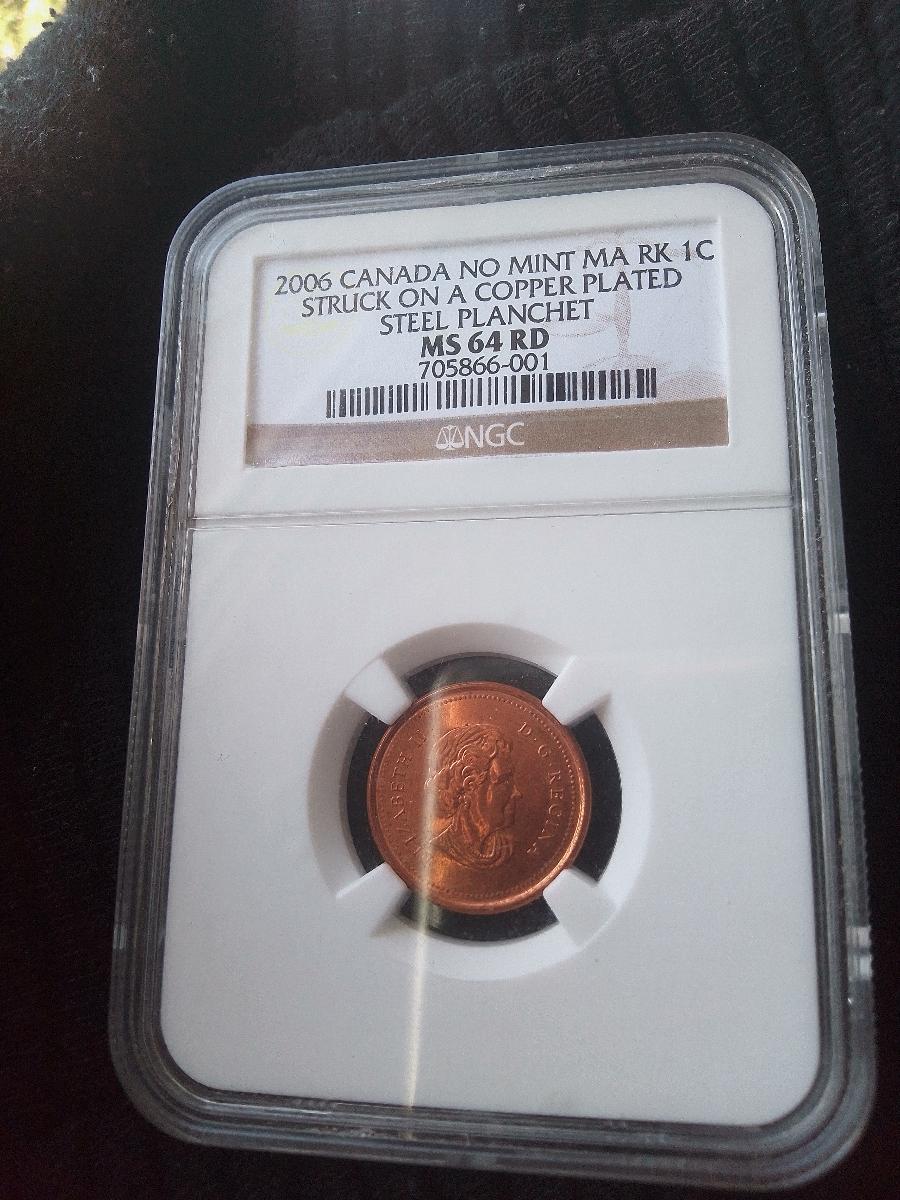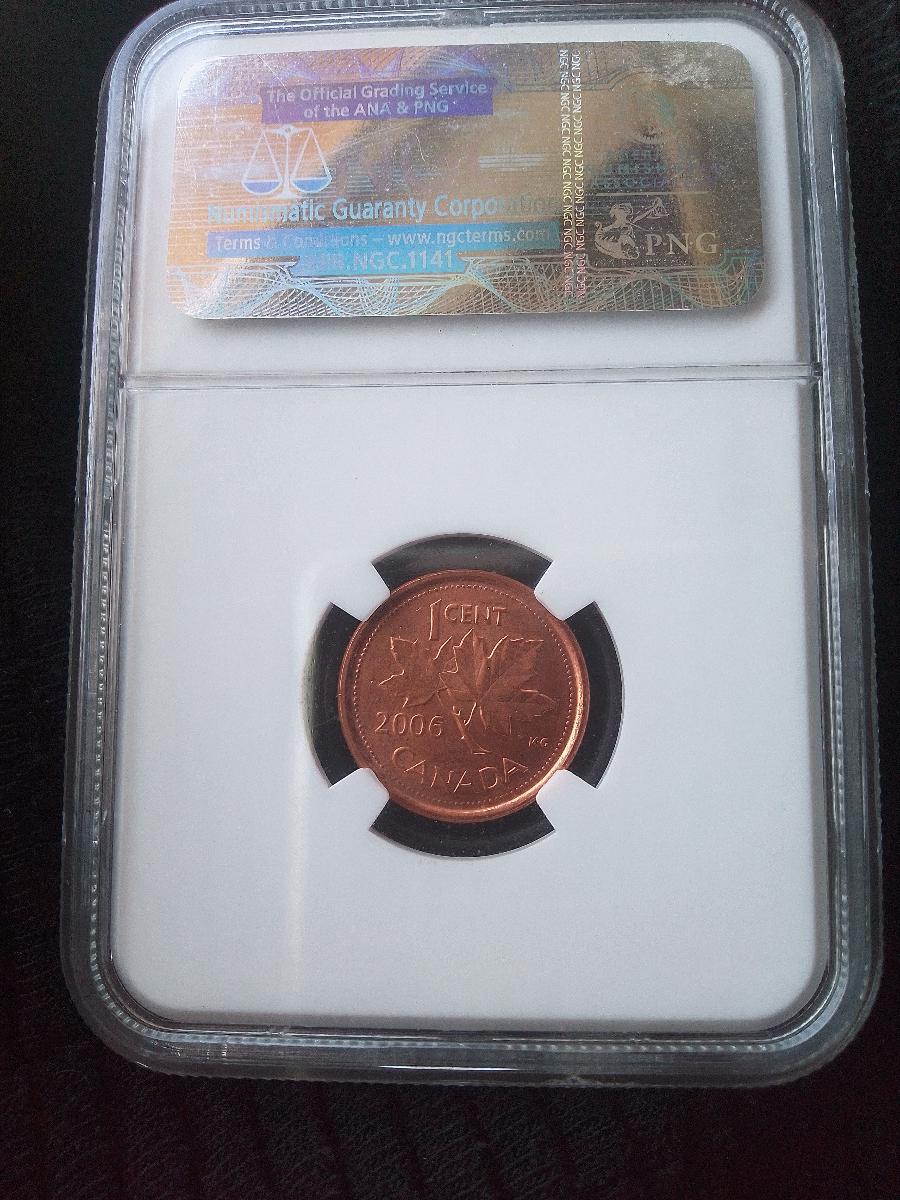



1C struck on a Copper Plated Steel planchet. Mule NGC - MS 64 " RD "
nebo
2006 Magnetic Unmarked 1 Cent.
When the blank planchets used to mint coins was changed from copper plated zinc to multi-ply plated steel, a "P" composition mark was added to the coins to easily differentiate between them.
When the 2006 1 cent coins were produced with multi-ply plated steel planchets, a number of coins were accidentally stamped using the Obverse die designed for use with copper plated zinc coins.
As a result they SHOULD have a "P" composition mark below the Queen's effigy on the obverse, but that mark is missing.
These coins were inserted into a few 2005 Uncirculated sets.
HOW TO TELL IF YOUR COIN IS A MULE:
In the year 2006, 1 cent coins were produced in both copper plated zinc (non-magnetic) and copper plated steel (magnetic) versions, so there's no obvious visible difference.
The fastest way to tell a mule coin from a proper one is to bring a magnet near the coin (make sure the magnet is very well covered to avoid damaging the coin upon contact). If the coin IS magnetic but DOES NOT have a "P" composition mark, it is a mule coin.
Selling above value due to it being in " RD " condition, which is extremely rare:
Color Implications on Desirability & Value Beauty is in the beholder, right? But in the numismatic marketplace, there is a general preference for certain types of coins, and in the world of uncirculated copper coins, Red is usually the tops. Red-Brown? So-so… And brown – meh. Not that anyone is turning down a BN 1793 Flowing Hair AMERI. Chain Cent – one of the rarest and most desirable early dates around. But, if given the option (and money is no object), many collectors with the funds in hand will go for uncirculated copper coins with Full Red (RD) color.That’s not to say Brown and Red-Brown copper coins are veritable rejects. In fact, when it comes to circulated copper coinage, Brown is the color that collectors want to see. It’s the hue of a naturally toned and wholly unadulterated circulated specimen. The more chocolatey the better. And Red-Brown copper coins? Some are just absolutely impeccable… In fact, there’s a legion of collectors who swear by toned coins for their color and character. A Red-Brown example may be just the look a collector wants for their vintage copper coinage; it may appear more natural in the eyes of some collectors that a century-old Lincoln Cent show shades of toning rather than to shimmer in a bright and orangey glow, as if the coin just rolled off the mint’s presses yesterday.Ultimately, color is a matter of choice – and in the subjective world of coin collecting one person’s preference for a RD-designated copper coin may be just as strong as another’s desire for BN and RB coinage. Still, color will affect pricing, and because RD specimens represent a much smaller share of copper coins – at least among vintage pieces – it’s the RD coinage that will usually fetch the most money. In some cases, RD specimens are extremely rare – often virtually unobtainable. That’s the case most especially with early copper coins as well as some 20th-century Lincoln Cent varieties that are scarce in top grades or were not generally preserved in inert environments.